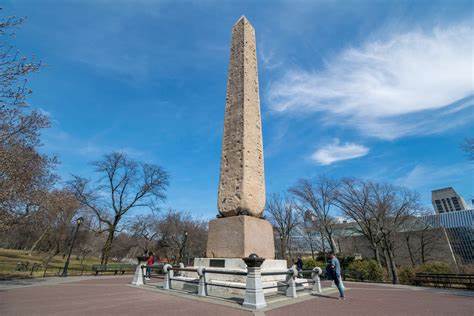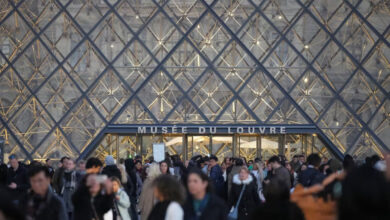
The obelisks of Cleopatra are columns with pointed pyramidal tops of long carved rock, made by the ancient Egyptians.
The Romans called the obelisks “Cleopatra’s Needles”, perhaps because of its resemblance to giant needles, although obelisks were already known before the era of Cleopatra and had been built by Pharaoh Thutmose III.
The obelisk is currently located in Central Park, New York, US and was built more than 3,400 years ago in Egypt.
Today, the obelisk is one of Central Park’s most historic attractions.
The Cleopatra’s Needle obelisk was one of two obelisks ordered to be built by Pharaoh Thutmose III for his temple “Temple of the Sun” in Heliopolis.
In the era in which it was built, its top was covered with gold to reflect the sunlight, on the belief that the obelisks represented the eternity that connected heaven and earth.
After that, the golden covering was removed and the obelisk collapsed alongside its twin obelisk, and was lost for hundreds of years in the Egyptian sands.
When the Romans took over Egypt, they discovered the two obelisks in 12 BC.
The Romans took the two obelisks to Alexandria and the two were set up in a temple built by Queen Cleopatra and dedicated to Julius Caesar, known as the Caesareum of Alexandria.
At that time, the Romans tried to restore the two obelisks.
But, fortunately, when the obelisks collapsed for the second time, the Romans buried it, which helped preserve most of the hieroglyphs on it against erosion.
In the 1870’s, the Egyptian government decided to gift one of the two obelisks to UK and the other to the US to celebrate the anniversary of the opening of the Suez Canal.
It took more than a year to move the obelisk to the US, and it was installed in Central Park in January 1881 across from the Metropolitan Museum of Art.
The obelisk was carved out of red granite and engraved with Egyptian hieroglyphs, about 200 years after it was built by King Ramses II to commemorate his military victories.
The obelisk weighs 220 tons and was carved from granite from the Aswan quarries.
Today, there are three Egyptian obelisks bearing the same name “Cleopatra’s Needle” in the world, as the other two are located in London and Paris.




